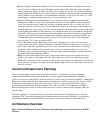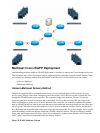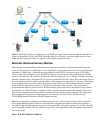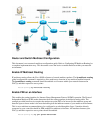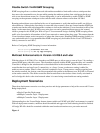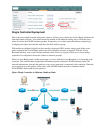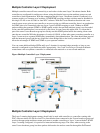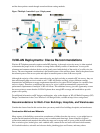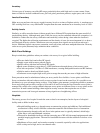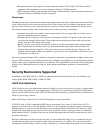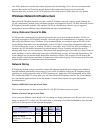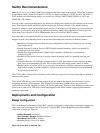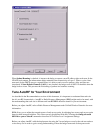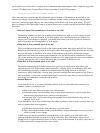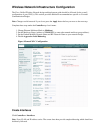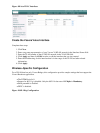Inventory
Various types of inventory can affect RF range, particularly those with high steel or water content. Some
items to watch for include cardboard boxes, pet food, paint, petroleum products, engine parts, and so forth.
Levels of Inventory
Make sure you perform a site survey at peak inventory levels or at times of highest activity. A warehouse at a
50% stocking level has a very different RF footprint than the same warehouse at an inventory level of 100%.
Activity Levels
Similarly, an office area after hours (without people) has a different RF footprint than the same area full of
people during the day. Although many parts of the site survey can be conducted without full occupation, it is
essential to conduct the site survey verification and tweak key values during a time when the location is
occupied. The higher the utilization requirements and the density of users, the more important it is to have a
well designed diversity solution. When more users are present, more signals are received on each user's
device. Additional signals cause more contention, more null points, and more multipath distortion. Diversity
on the access point (antennas) helps minimize these conditions.
Multi−Floor Buildings
Keep in mind these guidelines when you conduct a site survey for a typical office building:
Elevator shafts block and reflect RF signals.•
Supply rooms with inventory absorb signals.•
Interior offices with hard walls absorb RF signals.•
Break rooms (kitchens) can produce 2.4 GHz interference through the use of microwave ovens.•
Test labs can produce 2.4 GHz or 5 GHz interference, creating multipath distortion and RF shadows.•
Cubicles tend to absorb and block signals.•
Conference rooms require high access point coverage because they are areas of high utilization.•
Extra precaution must be administered when you survey multi−floor facilities. Access points on different
floors can interfere with each other as easily as access points located on the same floor. It is possible to use
this behavior to your advantage during a survey. Using higher−gain antennas, it might be possible to penetrate
floors and ceilings and provide coverage to floors above as well as below the floor where the access point is
mounted. Be careful not to overlap channels between access points on different floors or access points on the
same floor. In multi−tenant buildings, there might be security concerns that require the use of lower
transmission powers and lower gain antennas to keep signals out of neighboring offices.
Hospitals
The survey process for a hospital is much the same as that for an enterprise, but the layout of a hospital
facility tends to differ in these ways:
Hospital buildings tend to go through many reconstruction projects and additions. Each additional
construction is likely to have different construction materials with different levels of attenuation.
•
Signal penetration through walls and floors in the patient areas is typically minimal, which helps
create micro−cells and multipath variations.
•
The need for bandwidth increases with the increasing use of WLAN ultrasound equipment and other
portable imaging applications. The need for bandwidth increases with the addition of wireless voice
as well.
•
Healthcare cells are small, and seamless roaming is essential, especially with voice applications.•
Cell overlap can be high, and so can channel reuse.•



